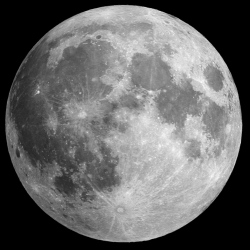
Academics and idealists from around the world believe that a moon base could be a vital aid to deep-space exploration, allowing us to easily construct and launch craft from a low-gravity environment. It could also give us a station to test and habituate astronauts for long voyages, like those on a journey to Mars.
A moon base would also allow us to run trials of the technology necessary for everything from asteroid mining to Martian colonization, both popular dreams in the mass consciousness, without moving too far from Earth.
In 2014 the European Space Agency began studying technologies that could be used to build a lunar base. (Some of the ideas generated through this project, like a robotic 3D printer using moon dirt to create a habitat around a bladder-like internal scaffolding are, well … space-age.)
The ESA has also expressed interest in collaborating with Russia on its moon ambitions, as had other nations like China, India, and Japan, in the past, and has helped the Russians scour the moon’s poles for water sources to aid in their plans.
This potential cooperation, still floated even amidst deteriorating European Union-Russian relations over the past few years, shows the potential for building common ground and a basis for practical diplomacy within a moon base, an ostensibly purely scientific long-shot project.
You might think these are still dream projects, that the challenges of building in space and protecting astronauts from the risks of living without an atmosphere or magnetosphere would be incredibly costly. While official agencies have largely been mum on price estimates, independent analyses suggest these projects would cost a lot compared to annual individual national space program budgets, but not a lot in global terms.
In a 2009 study, the Center for Strategic and International Studies suggested a lunar base would cost $35 billion to construct (sans the price of rockets, pre-planning, and design) and $7.35 billion a year to maintain. More recently, a July 2015 study by NexGen Space LLC, funded in part by NASA and reviewed by a number of independent experts, brought that construction number down to $10 billion.
Under the NexGen plan, the current darling of space optimists, robotic construction could begin by 2021, with humans working at a fully operational base by 2031. Public-private partnerships and the advance of technologies like Elon Musk’s reusable rockets are key to the plan’s projected low costs. And NexGen seems to think that the station could pay for itself, not just in scientific and exploratory value, but via mining rare isotopes that are common on the moon, like helium-3, a potentially ideal fuel for fusion power projects, and perhaps eventually via lunar tourism and other simple rent-seeking ventures.
NexGen’s belief in the ability of a moon base to fund itself is a bit aspirational, especially as we haven’t really gotten a sense of the quantity or accessibility of isotopes on the moon, or established a great market for them on Earth. But even if it’s a little optimistic to buy into space wonks’ dreams of moon bases, at least we know there’s enough support for the idea that it has become theoretically viable, and, scientifically speaking, potentially pragmatic to valuable.
But more than that, in terms of moon-shot cultural inspiration, a moon base is a more realizable and immediate goal than, say, the colonization of Mars. If we focus on a moon base first, not only could it (in the long term) aid Mars missions, but it could also instill the pride, excitement, and confidence to drive forward space exploration and boost the feasibility of colonizing other cosmic bodies.
There’s a lot, in short, to be gained by setting up shop on the moon, even if it does turn out to be a cash suck for a couple of decades. We’ve wasted billions more as a species on much less useful things. So rather than balk at what seems like a sci-fi fantasy, let’s all get ready to advocate for a future of moon construction, and dream shamelessly of lunar vacations and homesteading in space.
